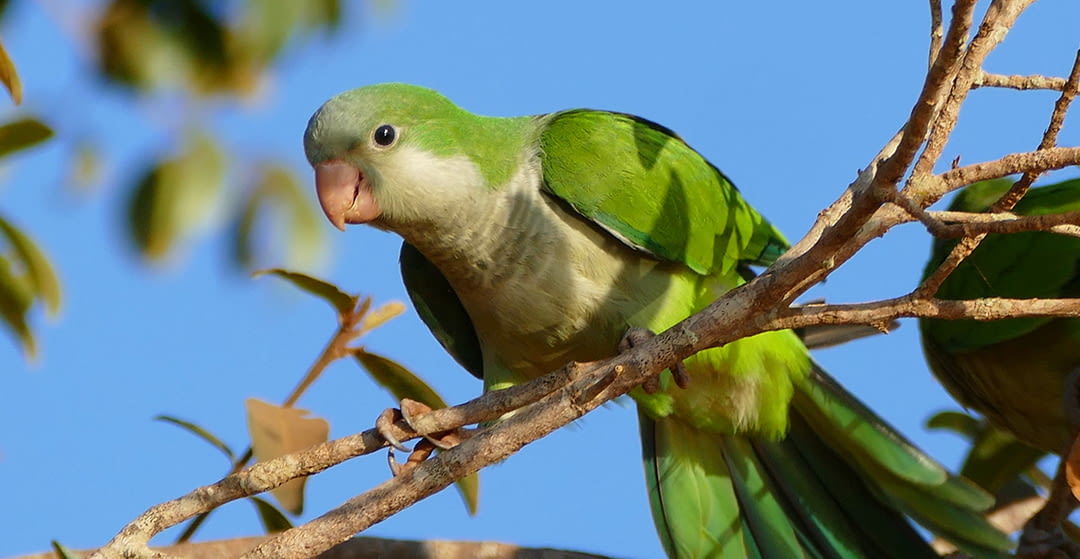
In the last 50 years, since monk parakeets (Myiopsitta monachus, also known as Argentine parakeet) arrived in Europe and dispersed throughout the continent, the species has developed different dialects that vary from country to country and city to city.
This finding comes from a study carried out by a team of researchers from the Max Planck Institutes of Animal Behavior in Konstanz and Evolutionary Anthropology in Leipzig, Germany.
Through an innovative analytical method, scientists compared the calls of monk parakeets in eight cities in four European countries, discovering that these parrots present unique sound variations in each city, similar to human dialects. Stephen Tyndel, lead author and doctoral student at the Max Planck Institute for Animal Behavior, notes that like humans, European monk parakeets have unique ways of communicating depending on their environment.
Although Europe lacks native species of parrots, several species, including the monk parakeet, have established populations after escaping the pet trade. Originally from South America, these parakeets are now found in large numbers in several European countries.
Monk parakeets, like all parrots, exhibit an extremely flexible vocal repertoire, allowing them to imitate and learn new sounds throughout their lives. Tyndel points out that since this invasive species has only recently spread into Europe, monk parakeets provide an ideal case to study the evolution of complex communication in a non-human species.
To determine whether European monk parakeets developed dialects, that is, calls that differ depending on their location, the researchers recorded these birds in eight cities in Spain, Belgium, Italy and Greece. A novel statistical method allowed them to confirm differences in calls between cities and also between parks within the same city. The results indicated that the parrots presented different dialects in each city, with specific variations in the frequency modulation structure within each call, hardly perceptible to humans.
However, when examining the presence of dialects within each city's parks, the scientists found no significant differences. This suggests that monk parakeet dialects were established early, when the birds colonized European cities, and did not undergo significant changes over time, according to Tyndel.
Although the results suggest a passive process in dialect formation, the researchers do not rule out the possibility of an active process that could facilitate social communication, such as recognition between group mates. In parks, where monk parakeets live in nearby nests, there could be vocal differences that function as a kind of slang to identify members of a specific group.
The team plans to investigate how individuals learn from each other and whether smaller groups exhibit dialects within the parks. This approach will contribute to the understanding of parrot communication and provide insights into how complex communication is linked to the social life of humans and animals.



